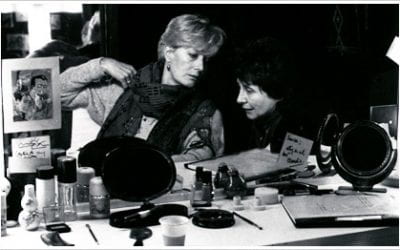Edifício Master: Another View
For someone like me, who knows the names of fewer than half the people who live in her dormitory, it was all too easy to imagine living in Edifício Master, the twelve-story Copacabana apartment building featured in Eduardo Coutinho’s 2002 documentary of the same name. Most of its residents, members of Brazil’s lower-middle-class, have lived there for years—some for their entire lives—yet they seem barely to know each other. Some of the newer residents complain about the lack of community, insisting no one would realize for weeks if someone died while locked away in his apartment. One woman told me that she went four months knowing nothing about the young girl who lived in the apartment above her beyond what she heard through the vent—and that she could not bring herself to say hello when she finally saw the girl in the elevator. Extended shots of dark, empty hallways confirm the sense of loneliness and isolation even amid a beautiful and bustling city.
However, in his interviews with the residents of Edifício Master, Coutinho shows them to be far from curmudgeonly misanthropes, their tiny apartments not hermitages but bastions of individuality. this documentary made me see my environment in a different way. The residents’ stories surprise us at every turn in the film. There is Paulo, who played and coached soccer around the world until a spontaneous outburst of nudity after a defeat cost him his job. There is Suze, who happily performs a Japanese ballad when the film crew seems a bit incredulous about her adventures in the Land of the Rising Sun. Then there’s renata, “number one in Brazil” by her own estimate, who speaks adoringly of her 42-year-old boyfriend in the States; then there’s Luiz, who suspects that his late adoptive father was his real father; Henrique, who met Frank Sinatra on the day the astronauts came back from the moon; Alessandra, the proud prostitute who swears her daughter will find a better path. These fascinating characters certainly don’t fit the stereotype of Brazilians concerned only with samba and sunshine. A Brazilian heterogeneity, a “complicatedness,” goes beyond simple racial diversity. It is a diversity of experience, making Brazil a place where any story can and does take place.
The documentary ends with a long scene showing the apartments from the outside at nighttime. Each time a resident passes by the window, we get a short glimpse into his or her life—only a glimpse before s/he walks away and returns to anonymity. In the quiet darkness, as the residents lock their doors for the night, the feeling of isolation is intensified. For me, the message was very clear, and it is one I’ll never forget: everyone, no matter how humble, has a story to tell—but you’ll never hear it if you don’t ask.
Fall 2009, Volume VIII, Number 3
Julie Duncan is a native of Burlington, Kentucky, and graduated from Harvard College with a degree in History and Science this June. She will attend Yale Law School in the fall.
Related Articles
A Brief Chronicle of Chilean Cinema
English + Español
As I see it, the development of Chilean cinema during the last years followed two general paths. The first line of development concerns the institutional framework. Cultural enterprises, especially film, have played a growing role in the democratization process./Si tuviese que definir el recorrido del cine Chileno durante los últimos, tendría que establecer al menos dos líneas en los que es posible detectar sus recorridos. En primera instancia el marco institucional y el creciente rol que han adquirido las industrias culturales- y en especial, el cine- en el proceso de democratización.
An Interview with Lita Stantic
English + Español
Producer Lita Stantic (b. 1942) played a crucial role in the nuevo cine argentino that surged to international prominence in the late 1990s and early 2000s by discovering and supporting young, emergent filmmakers- Lucrecia Martel, Pablo Trapero, Israel Adrián Caetano, Pablo Reyero, among them…
The Three Lives of Fernando Solanas
English + Español
In 1969, Fernando Ezequiel Solanas (b. Buenos Aires, 1936), in collaboration with other Argentine filmmakers, filmed a chapter of Argentina, mayo de 1969: los caminos de la liberación. The film has never been restored in its entirety, and few have seen it./En 1969, Fernando Ezequiel Solanas (Buenos Aires, 1936), filmó, junto con otros cineastas argentinos, un capítulo de Argentina mayo de 1969: los caminos de la liberación, una película legendaria que hasta hoy no ha podido restaurarse entera y que pocas personas han visto.




